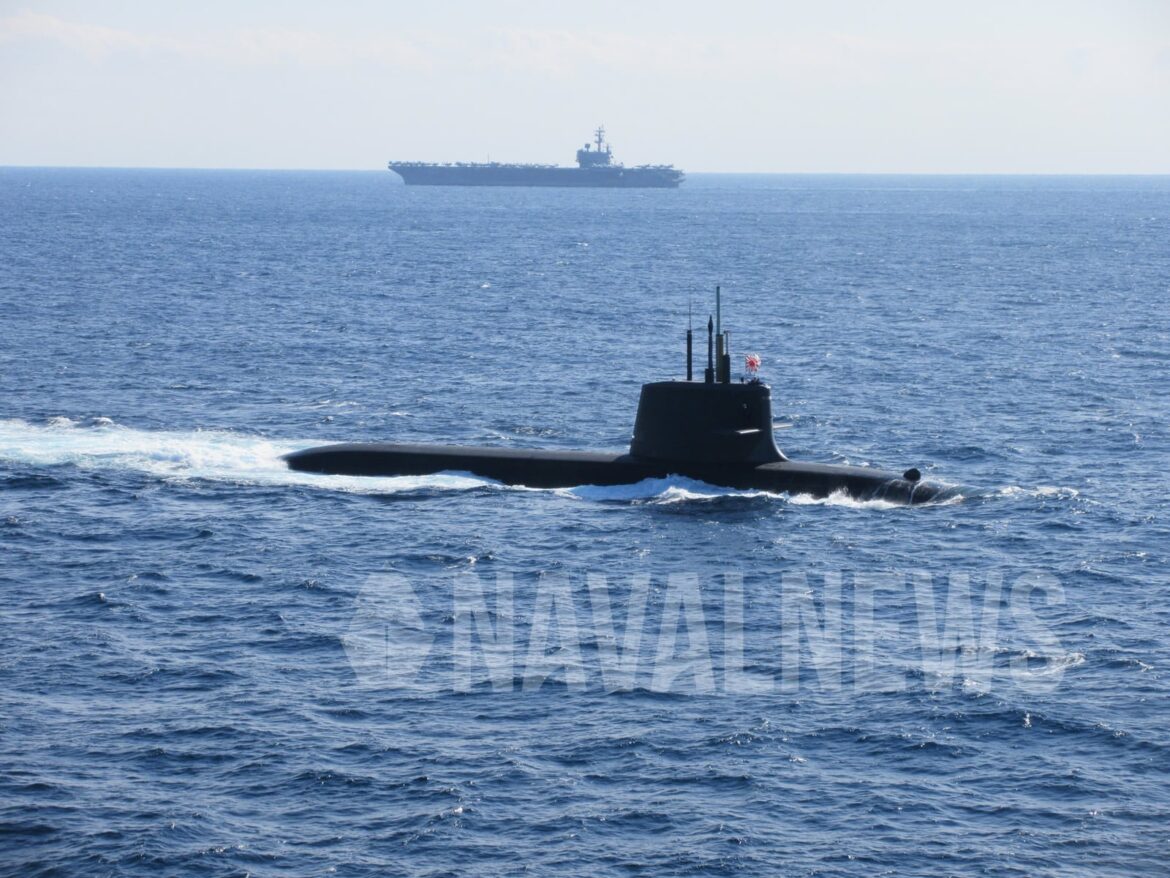Japan’s new Defense Minister Shinjiro Koizumi has publicly called for Tokyo to consider acquiring nuclear-powered submarines (SSN), marking what would be a significant strategic shift for the only nation to have suffered atomic bombings and where public sentiment remains deeply averse to nuclear weapons. Japan currently operates only conventionally powered diesel-electric submarines.
“There are new developments, and all the surrounding countries are set to possess (nuclear submarines),” Koizumi said during an appearance on a Tokyo Broadcasting System Television Inc. program on November 6.
The defense minister’s remark came when he referred to U.S. President Donald Trump’s approval for South Korea to build its own SSN during their summit talks on October 29 on the sidelines of the Asia-Pacific Economic Cooperation (APEC) leaders’ summit in Gyeongju, South Korea.
In East Asia, China is steadily increasing its fleet of SSNs, and North Korea plans to develop nuclear-powered submarines as part of a five-year defense development plan unveiled in January 2021.
On the TV program, Japan’s defense chief also said that:
“the environment surrounding Japan has become so severe that we need to discuss whether to continue using diesel power for submarines as before, or to switch to nuclear power.”
Japan’s new Defense Minister Shinjiro Koizumi
Nuclear submarines “are nothing particularly unusual,” Koizumi added.
At a news conference on the following day, when asked about the possibility of Japan employing nuclear submarines, the defense mister stressed, “At this point, nothing has been decided regarding the next generation of propulsion systems for submarines.”
The debate in Tokyo regarding the acquisition of SSNs has recently intensified, triggered by a policy recommendation compiled in September by an expert panel of the Ministry of Defense, which hinted at the possibility of using nuclear power as the next-generation propulsion system for submarines (i.e., acquiring nuclear-powered submarines).
The blue-ribbon panel called for exploring the use of “next-generation propulsion systems” for new submarines equipped with vertical launch systems (VLS) capable of firing long-range missiles.
In the report, the expert panel said VLS-equipped submarines should carry long-range missiles while possessing the capability to remain submerged for long periods of time and over long distances.
To achieve this, the panel emphasized the need to pursue research and technological development that includes “consideration of utilizing next-generation propulsion systems without being bound by conventional precedents.”
The panel did not specify what kind of “next-generation propulsion systems” it envisions. But a defense official who served as the panel’s secretariat said at a press briefing on September 18 that next-generation propulsion systems primarily refer to solid-state batteries and fuel cells.
However, at the briefing, Japanese reporters persistently pressed about the possibility of nuclear propulsion. The official responded with answers such as “We’re not ruling out any possibilities,” “No decision has been made by the Ministry of Defense,” and “Nothing has been decided yet.”
As a result, many media outlets have since mentioned nuclear power as if it were the only possible next-generation propulsion system.
Furthermore, a coalition government agreement reached on October 20 between the ruling Liberal Democratic Party led by Prime Minister Sanae Takaichi and Nippon Ishin (Japan Innovation Party) explicitly stated, based on the blue-ribbon panel’s recommendation, that it will promote policies to acquire submarines equipped with VLS and next-generation propulsion systems, an apparent nod to nuclear propulsion.
But at a press conference on October 31, Koizumi reiterated, “At this point, regarding the next-generation power source for submarines, we are not committing to any specific technology, including technologies currently under development in the private sector such as all-solid-state batteries and fuel cells.”
Is nuclear power a “next-generation propulsion power”?
Nuclear power has existed since the mid-20th century, and has been used for over 70 years since the US Navy commissioned the world’s first nuclear submarine, USS Nautilus (SSN-571) in 1954. Thus, can it really be called a next-generation propulsion power?
It is true that nuclear power is certainly a 20th-century power source, but it also has next-generation aspects. For example, microreactors and small modular reactors (SMRs) are considered next-generation nuclear power sources that offer enhanced safety and flexibility, and are attracting attention as the future of nuclear energy.
Many countries, including Japan, the United States, and China, are developing them. In Japan, Mitsubishi Heavy Industries is also developing a microreactor, which it calls “an innovative nuclear reactor that provides new value distinct from conventional land-based power generation reactors.” Meanwhile, Rolls‑Royce SMR, a subsidiary of Rolls‑Royce Holdings plc, is known for actively pushing the development and deployment of SMRs.
In conclusion, if it is a new type of reactor or an innovative nuclear technology, it will be positioned as a “next-generation power source,” and many countries, including nuclear-allergic Japan, will likely inevitably proceed with its military application.


AloJapan.com